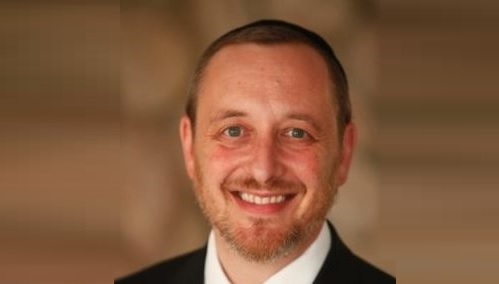Second Chances

Pesach Sheini gives us the inner strength to turn our lives around
My older sister taught me not to use the words “off the derech” when describing kids who aren’t Torah observant at the moment. She prefers “teens on a detour in life,” or perhaps more delicately, “teens taking the scenic route.”
When I was a teen many moons ago, it was common to go through what we called “idiot years,” normally around the years of 16 and 17. Today, I warn parents that “idiot years” can begin after bar or bas mitzvah. (But they needn’t worry. It almost always gets better somewhere in their late twenties!)
Rav Noah Weinberg ztz”l famously said, borrowing metaphorically from a pasuk describing Makkas Bechoros, “Ein bayis asher ein sham meis (Shemos 12:30), you (almost) can’t find a (Torah-observant) home without a child who is (spiritually) dead.”
They come from the best of homes. (What really makes a home the “best of homes”? They’re the ones with a healthy balance of love and boundaries, where each child feels respected, getting individual attention l’fi darkam. Homes where parents are happily married and rarely raise their voices.) In Yerushalayim, in a hangout near the Old City tragically nicknamed Crack Square, the sad quip is, “You’re a nobody here if your father isn’t a rosh yeshivah.”
I have a theory that shines a ray of light on this phenomena. The Vilna Gaon (Shabbos 77b) teaches us that during the period preceding Mashiach, we’ll see glimpses of that future utopian world, but through a negative manifestation of it, from “the side of darkness.”
The easiest way to explain this highly esoteric concept is through an example. Rav Nachman Bulman ztz”l suggested that with the permissiveness of the hippie era of the 1960s, we saw an expression of the prophecies of Yeshayahu Hanavi, describing a world of “peace, love, and understanding,” but in a perverted form.
Ramban (Devarim 30:6) describes a future world of “shanim asher tomar ein li bahem chefetz — years about which you’ll say I have no desire” (Koheles 12:1). In that world, what is good will be so obvious, we’ll instinctively do what is right, losing our bechirah.
We’re living in the era that precedes Mashiach. One of the lines my students repeat like a mantra is “it’s too hard.” They feel they’re addicted to making the wrong choices. They have phones with unfiltered Internet, and in their words, “It’s just a few finger movements and we’re good to go.” In a world where the walls between the Jewish home and the secular street are paper thin, “mah yaaseh oso haben she’lo yechta — how can the son avoid sin?” (Berachos 32a). It’s as though our teens have lost their ability to choose good. We’re witnessing the future of no bechirah, but in its negative form: We’re compelled to listen to the yetzer hara.
Is the immediate future irredeemably bleak? Fortunately, it’s not.
There’s a tiny parshah in the Torah that contains the only d’Oraisa festival of the month of Iyar: Pesach Sheini. It occurs on the 14th of the month, when the moon approaches its zenith. We don’t say Tachanun on that day, and some have the custom to dust off the box containing the leftover hand-baked matzos and crunch through a k’zayis.
It’s a day that doesn’t take up much of our mind space. But it contains a revolutionary message of hope.
WHY SHOULD WE BE LEFT OUT?
It was the 14th of Nissan in the second year after Yetzias Mitzrayim, and Klal Yisrael celebrated the milestone by sacrificing the Korban Pesach. A month later, on the 14th of Iyar, a few individuals came to Moshe and Aharon with a complaint. On the 14th of Nissan they’d been tamei and were therefore forbidden to bring the Korban Pesach.
“Lama nigara? — Why should we be left out?! (Bamidbar 9:7). “We also want to bring a Korban Pesach!”
At first glance, this would be called a sh’eilas tam, a simpleton’s question, to borrow from the language of Seder Night. Try going to the airport after you’ve missed your flight and demanding that a plane take you to your destination. Sorry, ma’am, you missed your flight. Deal with it.
Yet Moshe Rabbeinu took their complaint seriously. He told them to wait while he asked Hashem what should be done, and surprisingly, Hashem responded by telling Moshe they should be given a second chance. This is unbelievable!
A few individuals with a genuine yearning to keep a mitzvah brought about an entirely new way to fulfill that mitzvah and created a brand new parshah in the Torah. To understand how this happened, we need to take note that they waited a month, until the month of Iyar was in full force before approaching Moshe. What is the power of this month?
THE POWERFUL OX
Every night after the sun sets, a majestic constellation of stars appears in the skies. Each month, new constellations form, called Mazalos, which reflect the essence of that month.
Chazal teach us that these Mazalos are portals to the Higher Worlds and are replete with meaning (Sefer Yetzirah 5:5). The first three Mazalos of the Jewish calendar, corresponding to Nissan, Iyar, and Sivan, are called Taleh (Aries the lamb), Shor (Taurus the bull), and Teomim (Gemini the twins).
One of the ideas these Mazalos represent is the three-step unfolding of the profound relationship between Hashem and His people.
On Seder Night, the zenith of the month of Nissan, we all become the Taleh. A lamb has no individual identity. It’s part of a flock, docile, happy to follow the lead of its shepherd. On Seder Night, Hashem assumes the role of the nurturing Shepherd. He gives us an isarusa d’lailah, an awakening from above. Ruach hakodesh is readily available, and we achieve the highest levels of dveikus with minimal effort.
A month later, the world is under the full influence of the constellation of Shor. An ox has no shepherd; it works alone. It’s an individual, relying on the brute power of its own muscles. In the month of Iyar, we feel lonely, perhaps abandoned. We’re fully distant from that glorious connection we felt on that night when Hashem took us out of Egypt.
We have two choices: We can either stifle our feelings or find an isarusa d’l’sata, an awakening from below. That awakening must come from a place deep inside of ourselves that wants to re-experience the clarity of Seder Night.
How will we achieve that? We don’t know; there’s is no logical plan. But the love and yearning to live a life of emes is so intense, it bursts out into the open. That’s our lama nigara? moment.
Let’s go a little deeper and understand why it succeeds.
THE WEEK OF HOD
During the seven weeks that connect Yetzias Mitzrayim to Matan Torah we count Sefiras Ha’omer. It’s a journey that takes us from our birth as a nation in the month of Nissan to our glorious and triumphant wedding day in the month of Sivan (Shir Hashirim 3:11).
These two pivotal and defining events of our history are connected by the month of Iyar. Sefer Yetzirah (ibid.) teaches us that each month was created with a Hebrew letter. Iyar was created with the letter vav, which literally means a hook or connecter. In the Hebrew language, if I want to connect two things, I use the vav hachibur, the connecting vav.
Each week of Sefiras Ha’omer is associated with a mystical Sefirah, tools that Hashem uses for creation, a concept way beyond our understanding. Nevertheless, they are printed in our siddurim in the section on Sefiras Ha’omer. In the “Ribbono shel Olam” prayer said after counting, we are told where to “insert the appropriate Sefirah” for that day. Apparently, while looking at these lofty ideas from afar, there are lessons we can learn.
At the centerpiece of the month of Iyar is the mystical Sefirah of Hod, and the week of Hod begins with Pesach Sheini.
What does Hod mean? There are several answers to this question, and each one has layers and layers of depth. One of them directly connects to what we called our “lama nigara? moment.”
The word modeh, acceptance of a claim, comes from the word hod. What is truly incredible is that on Pesach Sheini, as the week of Hod begins, the One Who is modeh is k’vyachol Hashem Himself. He accepts the lama nigara? claim of the Yidden who were unable to bring the Korban Pesach at the right time.
An example in history of Hashem being modeh is found in Bava Metzia (59b). In what is possibly the most famous halachic argument in the Talmud, discussing the purity status of a certain oven, Rabi Eliezer announces, “If the law is like me, let it be proclaimed in Heaven!” A bas kol, a Heavenly voice proclaims, “Why are you arguing with Rabi Eliezer? The halachah is always according to him!”
Rabi Yehoshua stands up and defiantly responds with a declaration that will reverberate until the end of time: “Lo baShamayim hi — The Torah is not in Heaven!”
Later on, Rabi Nassan meets Eliyahu Hanavi and asked him how HaKadosh Baruch Hu reacted to the drama that had just happened. Eliyahu Hanavi responded that Hashem smiled and said, “Nitzchuni banai — My children are victorious over Me.”
Hashem’s smile is very revealing. It is as if He revels in His children’s victory. Indeed, He does. His smile reveals that everything is going according to plan.
GEMINI THE TWINS
The Mazal of Sivan, where Sefiras Ha’omer reaches its zenith at Har Sinai, is Teomim (Gemini the twins). Who are these twins? One possibility is that they’re the Jewish People and Hashem.
The idea that Am Yisrael and Hashem are twins obviously cannot be understood simplistically. So in what way are we twins with Hashem?
Let’s replace the word “twin” with the word “partner.” Hashem is looking for a partner to bring about His Will in creating the world. This can also be seen in Shlomo Hamelech’s description of Matan Torah as a wedding day. Husband and wife are a team.
Hashem doesn’t want a partner who is a passive lamb. He wants an aggressive ox, someone who will find the inner strength to do Hashem’s Will even when feeling rejected. Someone who will yearn for Hashem’s closeness even when feeling distant. Someone who will argue the subtleties of Torah while declaring, Lo bashomayim hi, the Torah isn’t in Heaven!
The month of Iyar, expressed by the ox, represents the full power of the Jewish People.
Nitzchuni banai! My children are victorious over Me! My children have discovered their inner power to create authentic Torah without the intervention of Heaven. This is the source of Torah shebe’al peh, the Oral Torah. Using the tools that Hashem gave them at Har Sinai, they formulate authoritative halachos from within themselves, down on earth. They’ve earned the right to be Hashem’s partners in perfecting the world. No wonder that Hashem smiles!
At first glance, Rabi Yehoshua and his colleagues, the bedrock of the Mishnah and creators of Torah shebe’al peh, have little in common with the esteemed tzaddikim who wanted to bring the Korban Pesach. The Tannaim never cried lama nigara? asking for a second chance.
On deeper reflection, however, they both reflect the essence of the month of Iyar. They’re both passionate and uncompromising in their search for truth. They both use their individualistic brute strength of the ox, whether in the yearning to bring a korban or in the svaros of the beis hamedrash. They both create Torah down here on earth. And they both epitomize Hod, a joyful acceptance of Hashem.
In the third month of Sivan, everything comes together. Crucially, in this month, those who felt distant and abandoned in Iyar realized that those feelings were nothing more than an illusion. When Hashem said, “Anochi Hashem Elokecha” at Matan Torah, incorporating the middah of Chesed reflected by the word Anochi and the middah of Din represented by Elokecha into one sentence, Bnei Yisrael understood that judgment is also a facet of Hashem, and that even in their darkest moments, He had been there all along. The false impression that He was hidden was necessary so that Klal Yisrael could recreate — through hard work on our journey to Har Sinai — what was given to us as a gift at Yetzias Mitzrayim. Every year we reaccept the Torah after having recreated the lofty levels of Seder Night.
But we do it on our own. That’s how we become partners with Hashem and earn the right to be called His twin.
THREE EXPRESSIONS OF YEARNING
What does this all have to do with our beloved children taking the scenic route?
Yosef’s pallbearers and Rabi Yehoshua and his colleagues are two examples of how new chapters can be created from a state of longing for Hashem. There is a third example.
Remember the story of Rabi Akiva? He started off as a complete ignoramus. The Gemara claims that his hatred for Torah scholars was so intense that if given the opportunity, he would bite them like a wild donkey (Pesachim 49b). One day, at the age of 40, he observed how drops of water over time had penetrated a rock. He reasoned that he wasn’t harder than rock and therefore Torah could penetrate him too. It was his lama nigara? moment.
“By chance” he met Rachel, Kalba Savua’s daughter and the rest, as they say, is history. The Arizal says that just as Moshe Rabbeinu is considered the father of Torah shebichsav, Rabi Akiva is considered the father of Torah shebe’al peh.
The week of Hod begins with Pesach Sheini. The climax of Hod, called Hod Shebehod, is Lag B’omer, Rabi Shimon bar Yochai’s yahrtzeit. The great Rabi Shimon bar Yochai told his students, “My Torah is just a fraction of a fraction of the Torah of my teacher Rabi Akiva” (Gittin 67a).
Our holy seforim bring down that, ultimately, the voice that cries lama nigari? is the voice of a Jew who has strayed and explodes with a longing to reconnect (Nesivos Shalom 2:325). Rabi Akiva paved the way, reaching the loftiest levels from a place of lonely despair.
Interestingly, Pesach Sheini was not just given to those who are impure, but also to those who are b’derech rechokah, too distant from Jerusalem to bring the Korban Pesach. Distance can also be understood homiletically as spiritually distant, someone taking the scenic route.
This year, as we munch on our somewhat stale Pesach Sheini matzah, let’s reflect on how one moment can reverse the direction of our lives. We should then turn to Hashem and from the depths of our hearts cry lama nigari? for our loved ones. And for ourselves. Can we honestly say that we’re so perfect that there is nothing for us to reverse?
GREETING MASHIACH
In the parshah of Pesach Sheini, we’re told that the lama nigari? request was made bayom hahu, on that day (Bamidbar 9:6). It’s the exact same phrase used to describe Seder Night: V’higadeta l’vincha bayom hahu (Shemos 13:8). The Arizal teaches us that bayom hahu is in turn a reference to the ultimate bayom hahu at the End of Days (Zecharyah 14:9).
The holy light unleashed by Klal Yisrael on Seder Night and the lama nigari? request of a few outcast individuals have something in common. The both share the ability to open portals in the Higher Worlds that connect to the day when darkness is forever removed. It’s empowering and uplifting to note how Yidden who are b’derech rechokah and tamei become part of the narrative that brings the Geulah, the Final Redemption.
Rav Shlomo Wolbe used to say that in our generation, the gedolim stories are being written by baalei teshuvah, those returning home. The inner strength they found to turn their lives around is our ultimate inspiration.
An elderly Jew from Warsaw shared the following vision of what will happen when Mashiach comes. Mashiach will go out to greet Klal Yisrael. Somewhere in the crowd is a young man who has gone through incredibly hard challenges, and, with a yearning for truth and fierce determination, has turned his life around. He’ll gently push his way through the throng. With a pounding heart, he’ll stretch out his hand to greet Mashiach.
Mashiach will ask, “Who are you?”
The young man will take a deep breath and proudly say: “You don’t who I am, but I’m the one who brought you here….”
Smart Chinuch
I would like to share two thoughts for parents with teens taking the scenic route:
The first is to practice what I call Smart Chinuch. A simple mashal would be to contrast the fighting technique of karate with judo. Regular chinuch is like karate, where you use your own strength to get the intended result. Smart chinuch is like judo, where you win by manipulating the strength of your opponent.
When a teen starts his “journey,” we quickly realize that talking to him directly achieves little and often backfires. All we can do is try and make our home into a warm, loving, and accepting environment. It’s frustrating because he needs us more than ever, but our inner wisdom tells us to hold back.
What we can do is manipulate his environment so that he can have, on his own, a lama nigari? moment. He needs to feel challenged in an exciting and refreshing way, where he feels he is controlling his choices. For example, by bringing the right “outsider” people into his life or by sending him to the right places, we can precipitate an epiphany, where he will want to change. In most cases, the change is a gradual process, but it begins with a single moment of clarity when his heart yearns to come home.
Rabbi Tani Prero, the dynamic director of Camp Yagilu Wilderness, a camp that challenges teenage boys to confront the raw beauty of nature by pushing themselves out of their own personal comfort zones, shares the following story:
“We were deep in the woods of the Appalachian Mountains, and we instructed the boys to build their own personal sleeping shelter out of local material: sticks, branches, leaves, and dirt, and then left them alone, overnight. Of course we had counsellors nearby, and we trained our boys how to occupy their minds constructively while alone. Nevertheless, Mendy was terrified. We patiently coaxed him into building his tiny hut and hoped for the best.
“Next morning, we asked him how he coped. He responded that he’d never davened so hard in his life! And he felt really good about it. It was a turning point for Mendy and from then on he became a davener.”
This is a perfect example of Smart Chinuch, where Mendy had his lama nigora? moment in a nonthreatening environment of self-discovery.
The other thought is, of course, to significantly raise our level of tefillah. It’s not enough to daven once a day for our child; we need to cry heartfelt tefillos several times a day. I always suggest saying the Chazon Ish’s tefillah for children. It’s normally said in shema koleinu, but it can also be said after a perek of Tehillim. The key is to focus on the words v’sasir mimenu kol hasibos hamon’os oso mishkidas Torasecha hakedoshah, remove from before him all circumstances that prevent diligent study of Your sacred Torah, v’tehafech es levavo, and turn his heart around. Essentially, we’re asking Hashem to manipulate the world around him to enable a lama nigari? moment. For Hashem this is easy.
It may take years, but never give up. Expect miracles.
(Originally featured in Family First, Issue 739)
Oops! We could not locate your form.




